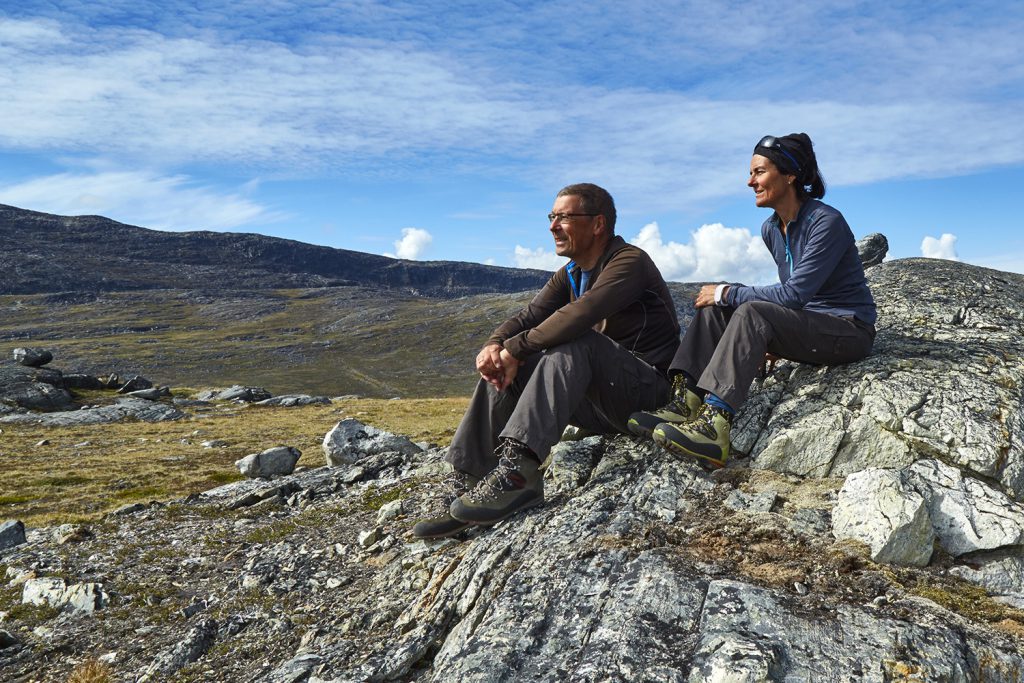
In Austmannadalen, West Greenland
In the early 1980s, the German news magazine Der Spiegel published a story about the then-successful management book In Search of Excellence by Tom Peters. His main point was that “human beings are the key to the success of companies, not money or equipment.” The stories in the book fascinated me at the beginning of my career in marketing. My head was full of ideas. I felt good. My job and my life made me feel like I was racing down an expressway in the fast lane.
Twenty years later, events beyond my control changed my life fundamentally. I first had to slow down and then reorganize every aspect of my life. During that time, I learned the value of quiet moments in a world that is getting louder and louder. I realized my deep need for silence, and I began to search for such moments and to capture them with a camera.
The idea of the ongoing photographic work “In Search of Silence” was born in 2014 during my first visit to Greenland. My wife and I trekked for weeks in complete solitude with minimal equipment. These trips have become an annual fixture. Today, offline moments are the luxury in my life and the focus of my photographic work.
In a Spotify interview about the song “This Place is a Shelter,” Icelandic musician Ólafur Arnalds said, “The song is a tribute to my home, which protects me from the madness of the world.” I find this protection while searching for remote and silent places. The more people live on earth and travel, the more it becomes challenging to find lonely places. But they still exist.
US acoustic ecologist Gordon Hempton considers a location to be quiet if he can listen to the sounds of nature without any human-made interruptions for 15 minutes. Sitting on a stone with closed eyes to concentrate better for a few minutes without being disturbed by non-natural noise is an exceptional circumstance today.
In 2017, the New York Times published an article by Steven Kurutz that added another element to Hempton’s view. “Much of the modern-day noise that people wish to escape comes not from loud sounds or grating talk alone, but from endless distractions.”
My search for silent places begins at home with studying maps and reading reports from others. But that is not enough. My photos need specific lighting and weather conditions. Therefore, being at the right place in the right moment has a lot to do with luck. To capture an extraordinary photograph in such a moment is like reaching the summit of a mountain after hours of climbing.
I first showed a picture in public in 2015, when Outdoor Photography Magazine (UK) published a photograph I submitted as its winning photo. Since then, I have competed in several international competitions, and the results have motivated me to exhibit my work. Most compelling of all was my placement in the final round of the BigPicture: Natural World Photography Award 2017, organized by the California Academy of Sciences, San Francisco. Later, experiencing the reactions of the visitors at The Other Art Fair in London and the Agora Gallery in New York City was an overwhelming experience. I realized that my work had touched people.
Today, I work with analog cameras and 120 roll and 4by5 sheet films. Why do I use analog equipment? The most basic argument is simple: Every step in my work is handcrafted; it is me, not an algorithm, that decides every aspect of an image.
Since 2018, my work has been exhibited in San Francisco, New York, Tokyo, London, Paris, Brussels, Barcelona, Milano, Bologna, Palermo, Venice, Florence, Berne, and Zurich.
My wife and I live in a small town in the Emmen Valley region of Switzerland.
